Colorful Procida Italy
Procida a heavenly little piece of rock in the Tyrrhenian Sea decorated with ancient buildings that would make a great Crayola Crayon advertisement.
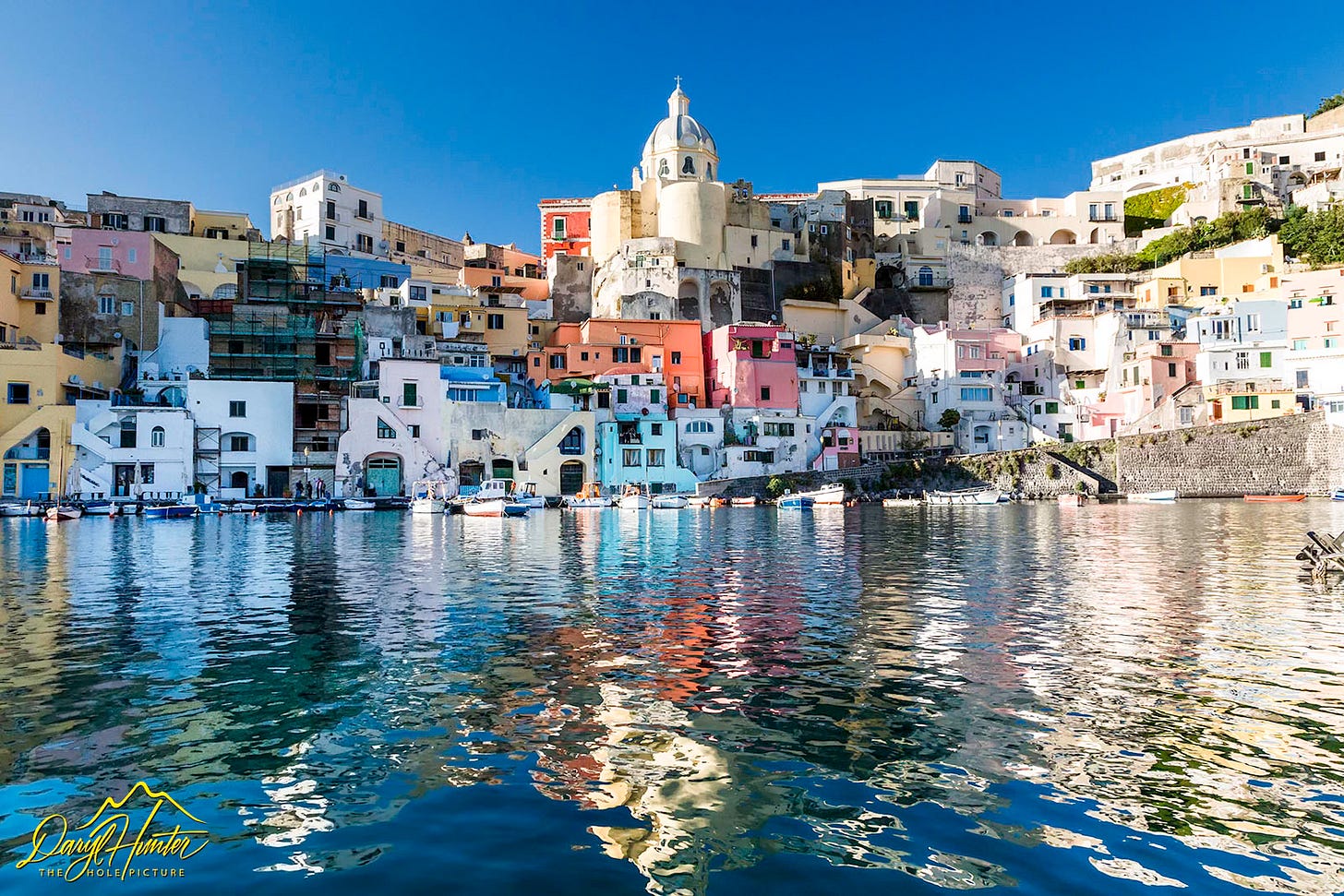
By Daryl L. Hunter
Procida, Italy, is a heavenly little piece of rock in the Tyrrhenian Sea, adorned with ancient buildings that would make a great Crayola Crayon advertisement. It is the smallest island in the Bay of Naples, and despite its location just a 40-minute hydrofoil ride from Naples, it receives a fraction of the foreign visitors compared to its neighboring islands, Capri and Ischia. Procida seems to want to keep its secret to itself, although it’s popular with Napoli residents looking for a summer escape from the steamy, chaotic city.
Departing from the ferry, I flagged a three-wheel scooter taxi then after being dropped off by the taxi at the top of the hill, with the driver pointing towards the stairs toward the address I had handed him, I made my way down the ancient stairway filled with anticipation tempered with apprehension. The apartments were poorly marked, and miy knowledge of Italian was limited to just saying 'Grazie,' rendering my efforts nearly futile. Upon reaching the base of the 200 stairs, I spotted the harbor across the Piazza.
The owner of Café La Gorgonia approached, noticing my confusion. I showed him my reservation, and without hesitation, he left his café to guide me to my new place. I expressed my heartfelt gratitude, and for the next three days, I became his most loyal customer.
Marina di Corricella is perhaps the most photogenic piece of developed landscape imaginable. While researching photography locations in Naples, this island repeatedly appeared in my research. Influenced by the photos on Google, I felt compelled to visit and capture some of my own. As I write, I find myself wishing I were once again dining at La Gorgonia, enjoying another feast of pasta and clams or sipping some vino in front of Bar Graziella listening to the jingle, jangle of sailboat lines rocking on the tide.
Marina di Corricella is one of the few fishing harbors without a road along the shore for sea-to-consumer commerce. This pleasant, quiet space enhanced the experience. Procida is a friendly alternative to its more glamorous nearby islands, with reasonable prices. Less popular than others, its tranquility is a plus for residents. Often overlooked for glitzier Capri and Positano, tiny Procida offers a rare Mediterranean escape. A few years ago, I had the opportunity to visit the highly talked-about island of Capri. While I appreciated the stunning natural beauty of its iconic rock formations, I couldn't help but notice that the island seemed to fall short when it came to the enchanting, old-world charm that I had anticipated. The vibrant atmosphere and serene landscapes were certainly impressive, but they felt somewhat overshadowed by the commercial excitement that surrounded the area, leaving a longing for a more rustic and authentic experience.
Untouched by mass tourism, the island retains its authenticity. Its small size and population density of about 11,000 residents limit the presence of sizeable hotels, as there's simply no room. Nevertheless, the population density is eclipsed by the island's natural beauty and its charming ancient architecture. While the main road is bustling with bicycles, scooters, and three-wheeled taxis, Procida’s compactness keeps large hotels and tour groups away. In Marina Grande, the main harbor, most waterfront buildings, including those facing ferries from Capri and Naples, are privately owned, with Airbnb rentals scattered throughout.
I was surprised that this country boy could find tranquility in such a bustling village. However, when I descended 200 cobblestone steps below the busy street, I discovered the peaceful waterfront. I spent nearly three days at Marina di Corricella, only leaving to walk to Marina Granda for a sunrise shoot. The stairway felt like a barrier, separating me from the commotion above.
Before dawn, the old Italian harbor buzzes with life before the rising sun. Waves lap against the stone piers, their rhythmic motion blending with wooden boats bobbing at moorings. Fishermen’s calls pierce the air, accompanied by the clatter of crates as they load nets onto vessels. Gulls screech overhead, their cries reverberating off sun-bleached buildings. Homes, stacked like colorful blocks, radiate faded hues—ochre, terracotta, and sea-washed blue. Cracked walls, touched by salt and time, cradle sagging wooden shutters. Clotheslines stretch across balconies, adorned with garments fluttering in the briny breeze. Fabrics sway in sunlight, their rustling merging with the harbor’s symphony. My hand-washed clothes hang here, marking the first time they haven’t been cooked in an electric dryer. The atmosphere electrifies my photography.
Along the Marina di Corricella waterfront, cars, scooters, or road-related vehicles are nonexistent, as no road access exists there. The landscape consists solely of cobblestones, charming cafes, and an eclectic mix of fishermen's gear—storage, nets, floats, and rope. This vehicle-free waterfront was a joy for me as a photographer. I chose to rent an Airbnb apartment here. While comfortably settled in Marina di Corricella, I overlooked exploring the rest of the island since I didn’t know how to request a taxi and had left my rental car in Naples. The atmosphere of this ancient waterfront lent a soothing serenity, perhaps because without my rental car, I couldn’t indulge in my usual frantic style of photographing every inch of the island from above.
It seems that many residents in Procida own boats—whether they are fishing boats, stylish cruisers, or colorful old wooden rowboats. Their connection to the sea traces back to the island’s first settlers. It is believed that Procida was inhabited by the seafaring Mycenaeans as early as 1600 BC, and many have followed since then. But oddly enough, there wasn’t a boat or kayak rental at Marina di Corricella; did I mention that tourism isn’t developed much here? Anyway, I wanted to photograph the village from the water and needed a boat. I asked the restaurant owner who owns those wooden rowboats tied to the dock. He responded that his brother-in-law owns the yellow one. I asked if I could pay a few dollars to rent it now, if he was willing, and then take it out later when the light was better and casted better light on the village. His brother-in-law agreed, all with a handshake and $20 euros. That evening at golden hour, I rowed the harbor, capturing the village in the evening light while marveling at the low-key and trusting procurement of the cute little boat.
The architecture of Procida has Greek origins. In fact, the history of Procida is concentrated first on the medieval village “Terra Murata,” which grew up around a fortified citadel at the highest point on the island. Visitors can see all the way to Mount Vesuvius on a clear day. Mount Vesuvius, however, was the least of the island’s threats: starting in the ninth century, raids by Saracenic pirates occurred so frequently that Procida’s residents, formerly scattered across the island, clustered on the fortified peak. The pirates may be gone, but their legacy lives on. Anywhere in the northern Mediterranean, you never have to look very far to find a defensive embattlement protecting the population from centuries of incessant marauding pirate raids.
I have a deep appreciation for the charming old rowboats, which evoke a sense of nostalgia and history. In picturesque Mediterranean fishing villages, these traditional vessels appear to be favored over the modern aluminum or rubber boats commonly found in American harbors. It is disheartening that in our pursuit of expediency and cost-effectiveness in the USA, we often choose the quicker, less meaningful option, while Europeans continue to embrace their rich cultural heritage and the elegance of time-honored practices.
Another morning before dawn, I set off on a hike across the island for a sunrise shoot. Captivated by the lights in the alleys leading to Marina Grande, I found the ancient, empty, wet, cobblestone streets glowing under the streetlights to be ideal for photography after an evening thunderstorm. As the sun rose over Marina Grande, casting golden light everywhere, fishermen pulled nets from boats floating in calm waters. The air was filled with the salty ocean scent, mixed with diesel and bread from the waking village. Colorful houses—ochre, pink, and pale blue—dot the hills. Old men sit on crates, smoking, hands rough like ropes. The light sharpens, creating bold shadows. Procida moves slowly, its heartbeat connected to the tide. The day is fresh, and the island keeps its secrets close, like a fist. This sunrise didn’t disappoint, and I was also treated to a peek at Mount Vesuvius miles away.
This picturesque hunk of rock has served as the set for numerous films, such as The “Postman” by Massimo Troisi, and some scenes in “The Talented Mr. Ripley” were shot on Corricella. If I were a location scout, it would be a favorite of mine.
In the village, you can only navigate using stairways and winding passages that are concealed among the houses. Some of these paths are spacious enough for small vehicles. The island is clearly appealing to tourists, thanks to the charming arrangement of colorful houses and boats. While there are waterfront restaurants and cafes, gift shops selling souvenirs are few. The atmosphere is more relaxed, making it an ideal spot to simply enjoy the local vibe and interact with residents for those with an Italian vocabulary that extends beyond Grazie
Sadly, departure day arrived, and once again, I didn’t know whom to call for a taxi. It was only a mile walk across the island, so I packed my rolling suitcase and placed my laptop bag over the handle to hang off the suitcase. I began my journey across the top of the hill. The 200 steps were difficult, but the mile of cobblestone was also treacherous. By the time I reached the ferry terminal, the cobblestone streets had ruined the wheels of my formerly rolling suitcase. This was the first leg of my whirlwind trip through Italy, Austria, Germany, and Switzerland, and I had to drag that suitcase everywhere. Upon returning home, I replaced it with one that had six-inch wheels that might survive cobblestone streets more adroitly.
Spending time on the bay front at Marina Corricella or Marina Grande is a pleasant assault on the senses because of the juxtaposition of hustle and bustle, population density, and the peace of the bay, and its cliffs blanketed with pastel bathed beauty. The colorful Marina di Corricella had such a wealth of compositions that I captured countless moments, yet I find myself yearning to return. Procida’s untouched charm, with its vibrant fishing harbors and ancient architecture, offers a serene escape from the glitz of its neighbors. This heavenly island, rich in history and authenticity, left an indelible mark, and I can’t wait until I have the opportunity to return to its tranquil shores.




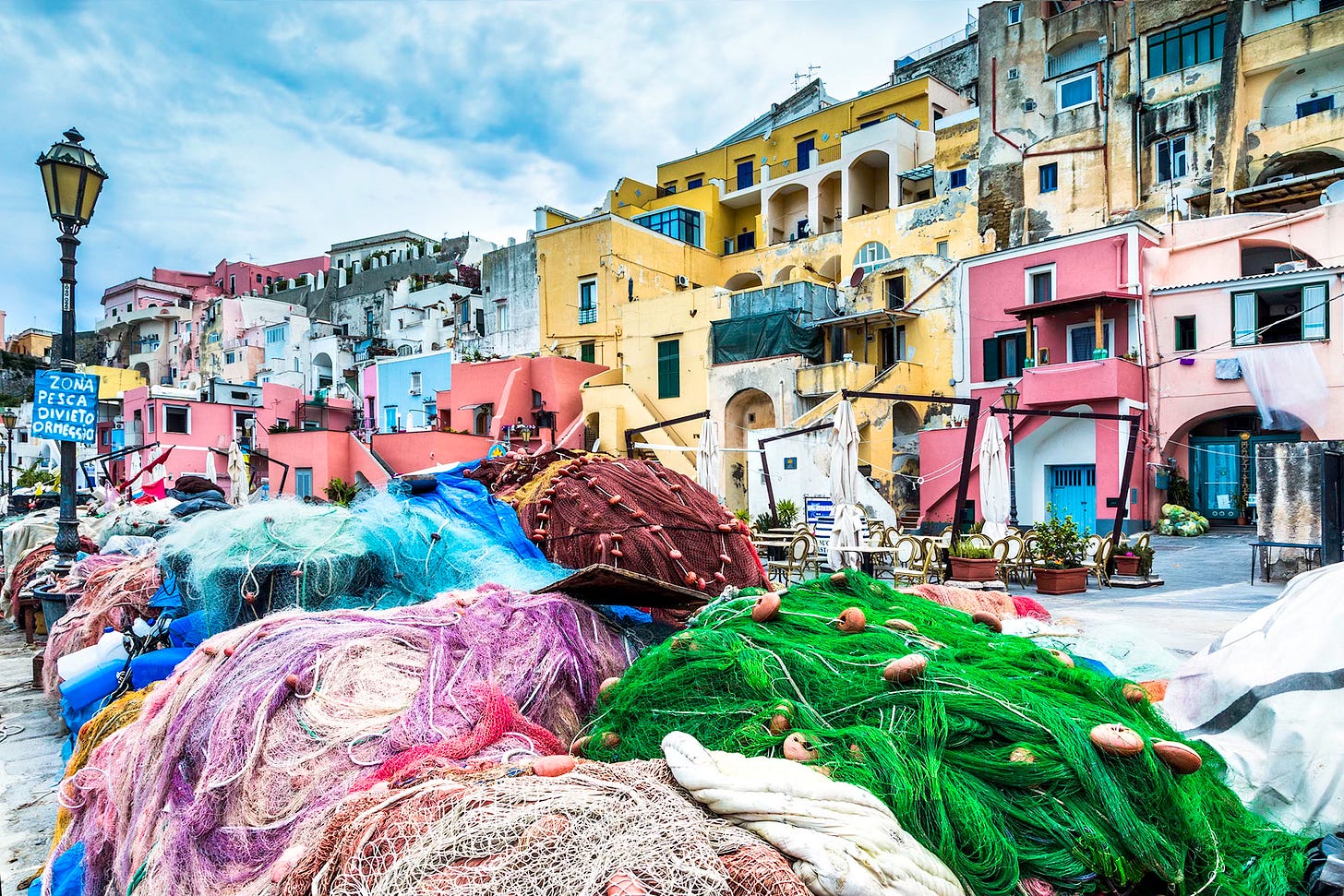

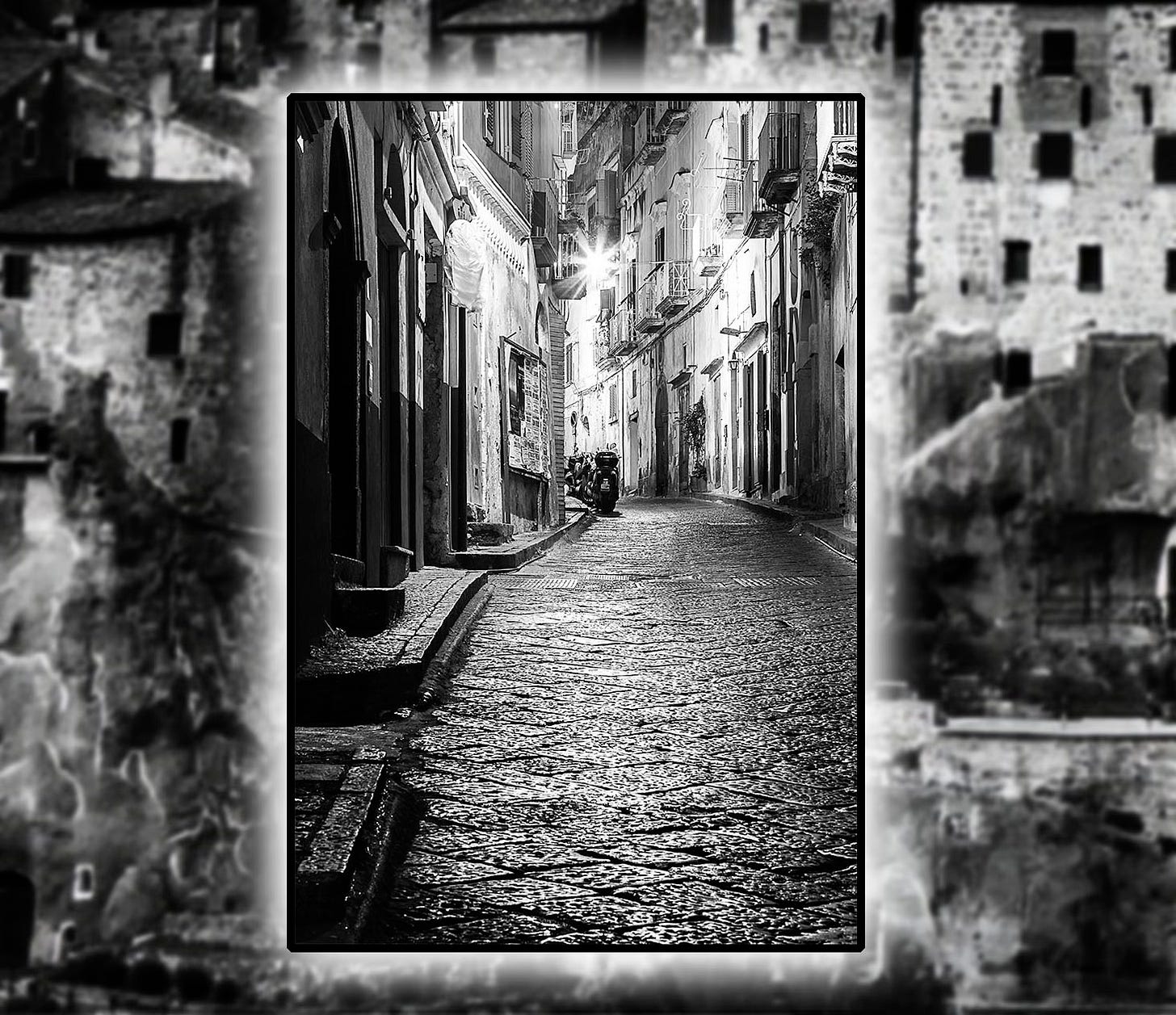
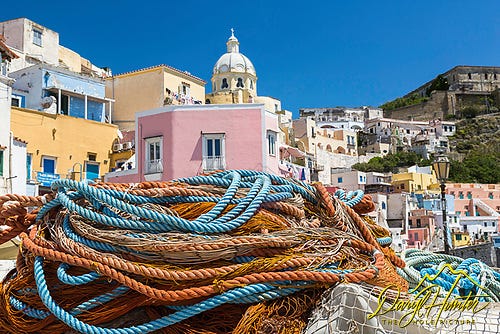
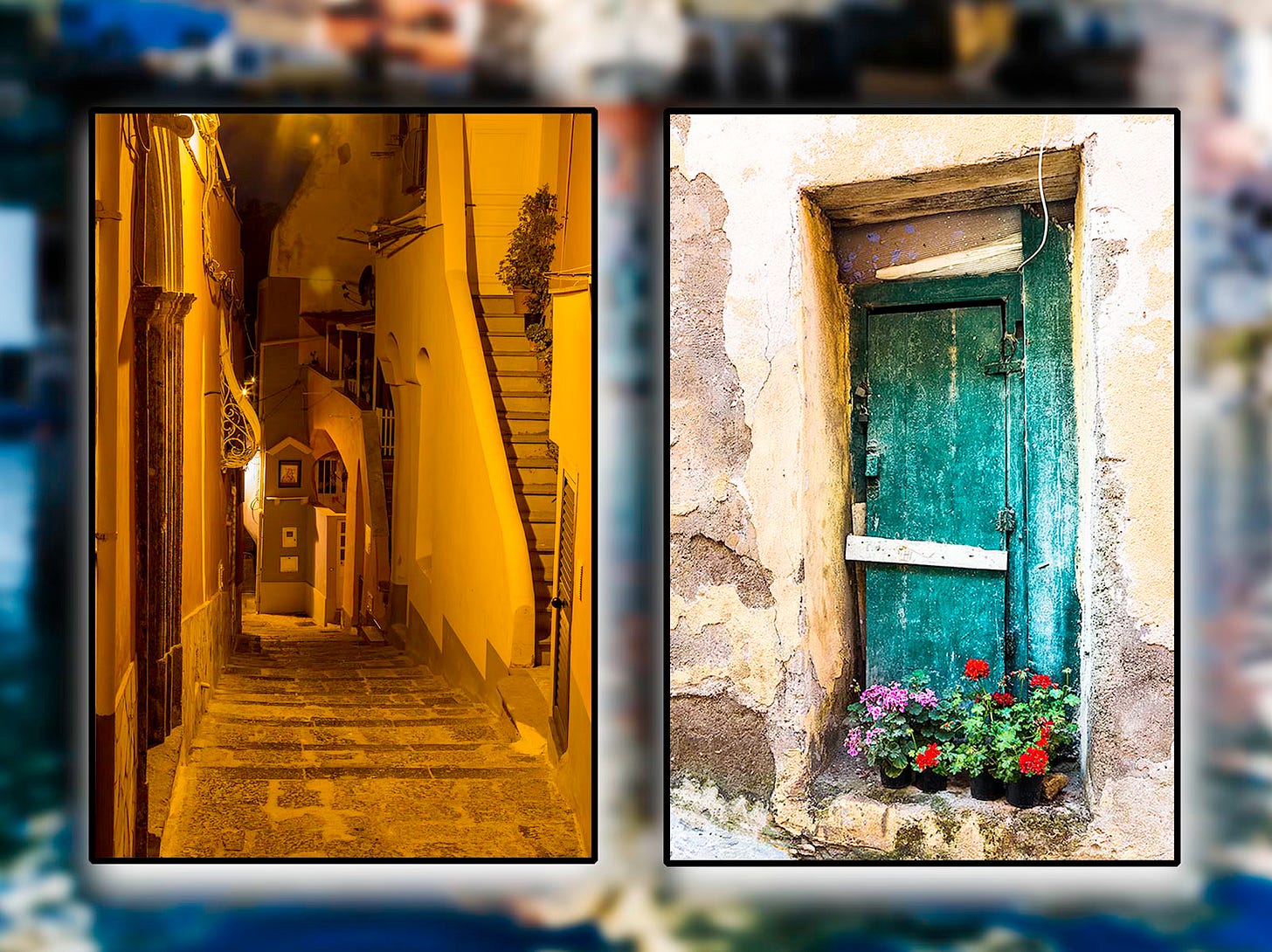
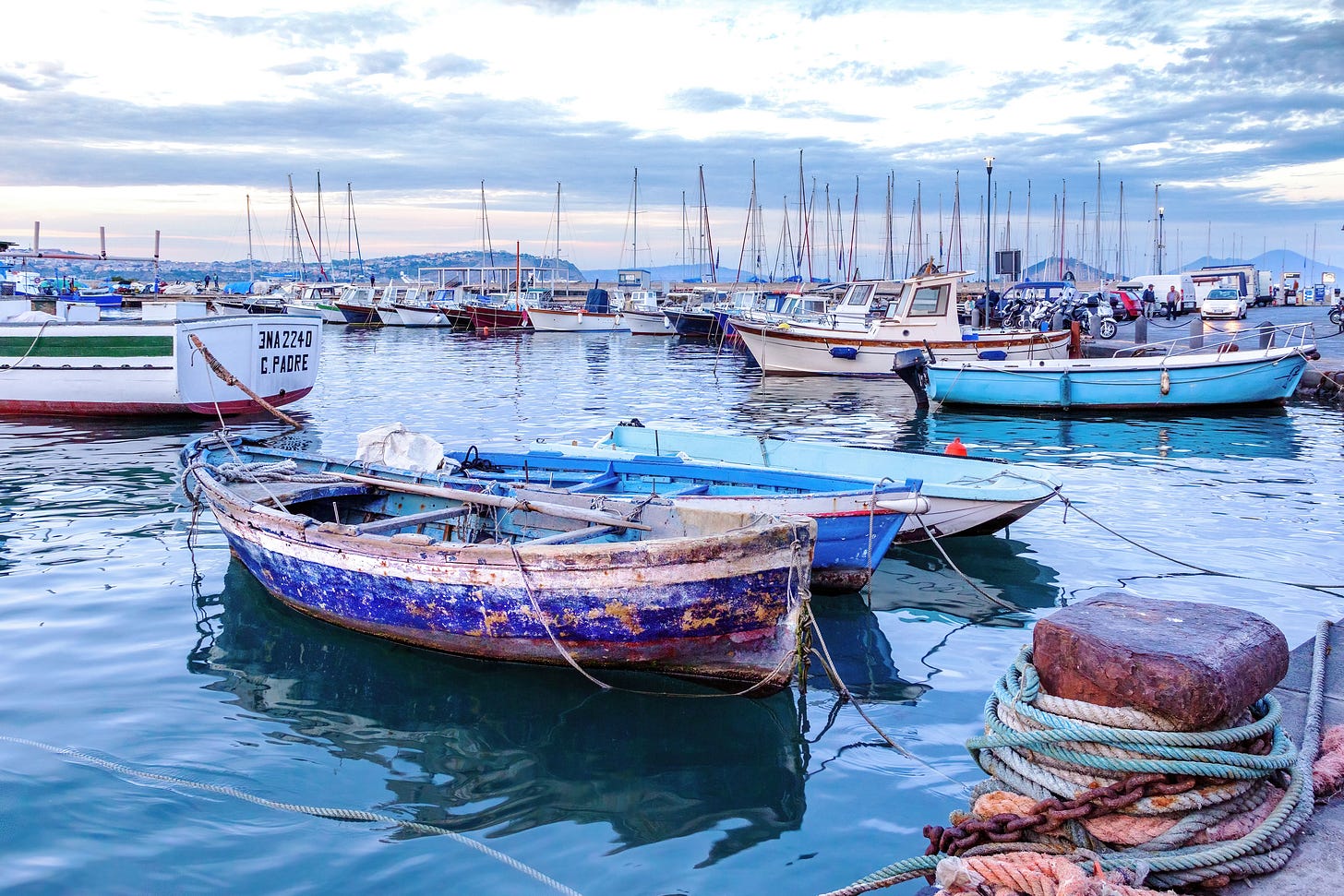
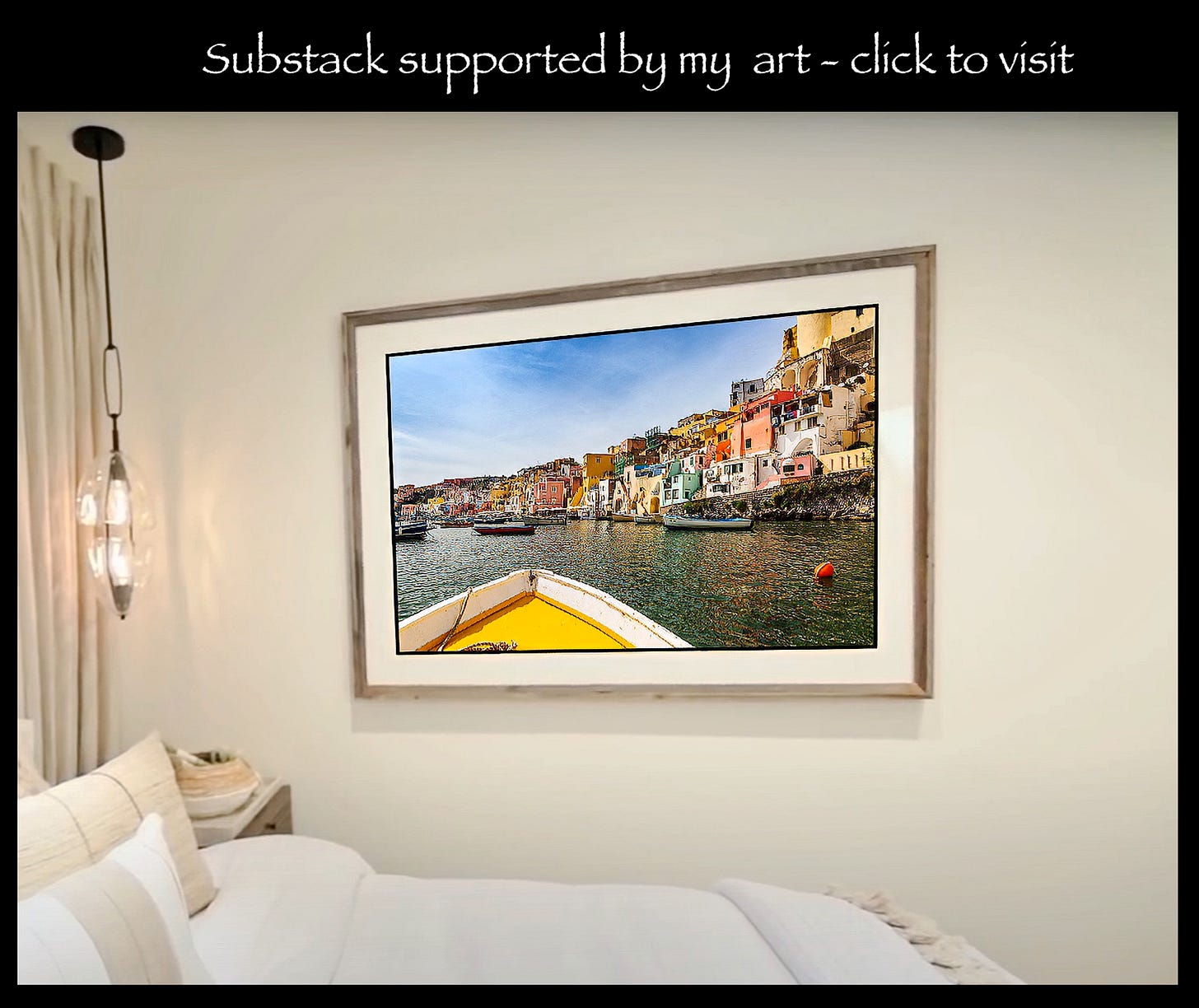
I thought you might go spend some time there on that side of the island, the only harbor I have seen without a road. Happy trails
Love the colors and relaxed vibes in Procida!